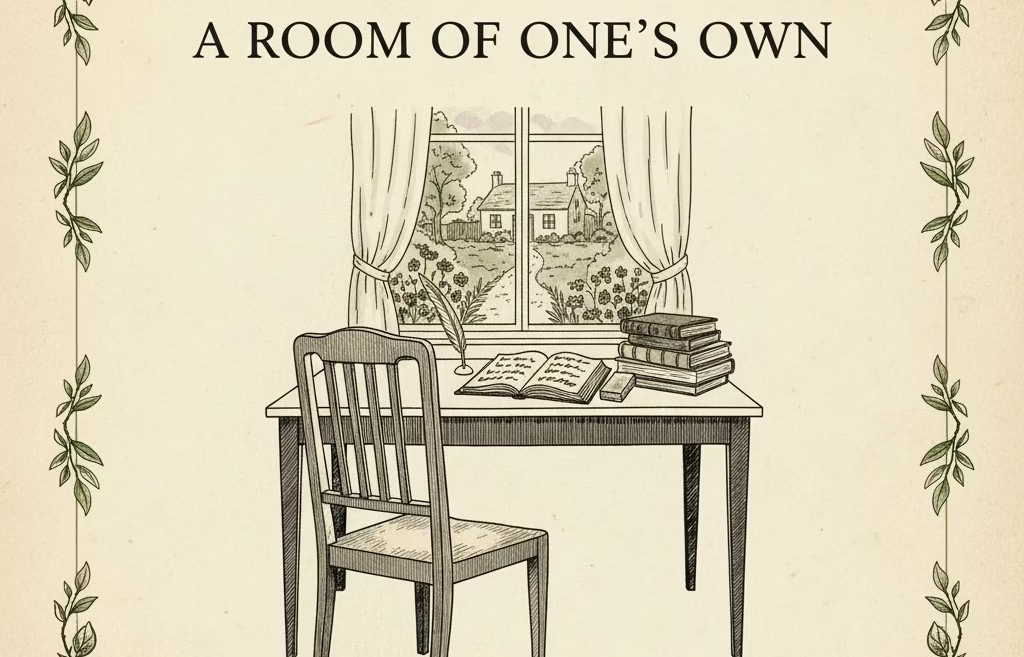Introduction
Arthur Miller’s Death of a Salesman stands as a cornerstone of American drama, celebrated for its searing portrayal of the common man’s struggle against the crushing weight of societal expectations. Through the character of Willy Loman, Miller reimagined what it means to be a tragic hero, shifting the focus from kings and nobles to everyday individuals whose dreams and failures resonate across generations. This analysis explores why Death of a Salesman remains relevant, examining its themes, characters, and the enduring tragedy of the common man.
Death of a Salesman: Common Man in Modern Tragedy
When Death of a Salesman premiered in 1949, it shattered conventions by presenting a protagonist who was neither royal nor heroic in the traditional sense. Willy Loman is an aging, struggling salesman whose relentless pursuit of the American Dream leads to his downfall. Miller’s bold vision argued that the struggles of ordinary people are not only worthy of dramatic exploration but are, in fact, the essence of modern tragedy. FOR DETAILED ANALYSIS
Redefining Tragedy
Miller’s essay, “Tragedy and the Common Man,” articulated his belief that tragedy could belong to anyone with the courage to fight for personal dignity. Willy Loman’s journey is a testament to this idea: his aspirations, disappointments, and ultimate demise reflect the universal human experience of striving and failing. Miller’s Death of a Salesman marks a revolutionary shift in the concept of tragedy. Traditionally, tragedy centred on kings, nobles, or figures of high status. Miller, however, boldly asserts in his essay “Tragedy and the Common Man” that the struggles of ordinary people are just as worthy of tragic representation as those of royalty. He argues that the common man is the perfect subject for tragedy because the fear of losing one’s place in society, dignity, or self-worth is universal.
“I believe that the common man is as apt a subject for tragedy in its highest sense as kings were.” — Arthur Miller
The American Dream: Hope and Disillusionment
Central to Death of a Salesman is the critique of the American Dream. Willy Loman’s belief that charisma and likability guarantee success is repeatedly undermined by harsh reality. The play exposes the dangers of equating self-worth with material achievement and the illusion that anyone can “make it” with enough charm and ambition.
The Illusion of Success
Willy’s unwavering faith in the American Dream blinds him to his own limitations and the changing world around him. He clings to memories of better days and refuses to accept help, believing that admitting failure would destroy his dignity. This denial leads to emotional turmoil, strained family relationships, and ultimately, tragedy.
The Modern Tragic Structure
Unlike classical tragedies that focus on the downfall of the mighty, Death of a Salesman evokes pity and fear through the struggles of an ordinary man. Miller’s use of non-linear storytelling—blending memories, dreams, and reality—mirrors Willy’s psychological state and deepens the audience’s empathy. READ MORE
Family Dynamics and Generational Conflict
The Loman family’s struggles are at the heart of the play. Willy’s wife, Linda, stands as a pillar of support, while his sons, Biff and Happy, grapple with their own identities and expectations. The generational conflict between Willy and Biff is particularly poignant, highlighting the gap between parental dreams and children’s realities.
Death of a Salesman: Social Critique
Miller’s play is also a sharp critique of capitalist values that equate worth with productivity and wealth. Willy Loman’s decline reflects the dehumanising effects of a system that discards those who can no longer contribute. The play questions whether the pursuit of material success is worth the personal and familial cost.
Societal and Psychological Dimensions
Miller’s tragedy is not just personal but social. Willy is a victim of the relentless pressures of a capitalist society that values people only for their productivity. The play critiques the American Dream, exposing how its promises can become destructive illusions for those unable to achieve them.
Social Critique: The play highlights the dehumaniSing effects of a system that discards the old and unsuccessful.
Universal Relevance: By making a common man the centre of tragedy, Miller ensures the story resonates with anyone who has struggled with self-worth, societal expectations, or the fear of failure.
The Cost of Ambition
Willy’s relentless ambition leaves him isolated, misunderstood, and ultimately, alone. The pressures to succeed, provide, and conform to societal expectations drive him to despair. Miller’s portrayal is a warning against sacrificing personal happiness and integrity for unattainable ideals.
Death of a Salesman : Enduring Relevance
Decades after its debut, Death of a Salesman continues to captivate audiences. Its exploration of identity, family, and the search for meaning is as relevant today as it was in postwar America. The play’s themes echo in contemporary struggles with job insecurity, mental health, and the elusive promise of the “good life”. Death of a Salesman remains a touchstone for modern tragedy because it democratises the tragic experience. Willy Loman’s story is not unique—his fears, dreams, and disappointments are shared by millions. Miller’s vision compels audiences to recognise the heroism and suffering in ordinary lives, challenging us to question the very systems and values that shape our destinies
Modern Interpretations
Recent productions and scholarly analyses have re-examined the play through various lenses, including feminism, Marxism, and psychoanalysis. The universality of Willy Loman’s plight ensures that each generation finds new meaning in his story, whether in the context of economic instability, changing family structures, or shifting definitions of success.
Death of a Salesman : Character Analysis
Willy Loman
A sixty-three-year-old salesman, Willy is the embodiment of the common man’s tragedy. Willy Loman is the quintessential tragic figure, embodying the hopes, anxieties, and disappointments of the ordinary individual. Also, Willy Loman, the protagonist of Arthur Miller’s Death of a Salesman, is a salesman whose life is defined by his unwavering belief in the American Dream and his desperate desire to be “well-liked.”
As his career declines and his mental health deteriorates, Willy becomes increasingly unable to distinguish between reality and illusion, retreating into memories and fantasies of a more successful past. He measures his own worth and that of his sons, Biff and Happy, by superficial standards of popularity and material success, ignoring the value of hard work and personal fulfilment. This fixation not only blinds him to his family’s genuine needs but also perpetuates a cycle of denial and disappointment within the Loman household.
Throughout the play, Willy’s inability to accept change—both in himself and in the world around him—leads to mounting frustration and alienation. His relationship with Biff is particularly strained, as Biff’s disillusionment with his father’s ideals exposes the hollowness of Willy’s dreams. The play’s structure, shifting between present events and Willy’s memories, highlights his internal conflict and the emotional scars left by past betrayals. Ultimately, Willy’s tragic flaw is his refusal to confront the truth about himself and his family, culminating in his suicide. Moreover, this was a final, misguided attempt to provide for his loved ones and validate his life through the legacy of his insurance policy. Willy’s story stands as a powerful critique of the American Dream and a poignant exploration of the struggles of the common man.
Linda Loman
Linda is the emotional anchor of the family. Her unwavering loyalty and compassion contrast with Willy’s instability. She represents the often-unseen strength of those who support loved ones through hardship. Linda Loman is much more than a background character in Death of a Salesman—she is the emotional anchor of the Loman household. Her devotion to Willy is unwavering, even as she quietly endures his emotional distance, infidelity, and the burdens of his unraveling mental health.
Linda’s role is complex. Linda consistently supports Willy, defending him to their sons and encouraging him to pursue what little dignity he can find. She is aware of his struggles, including his suicidal tendencies. But she often chooses gentle denial or rationalisation over confrontation, hoping to protect his fragile ego. Unlike Willy, Linda recognises the family’s dire financial and emotional situation. She urges Willy to seek a less stressful job and tries to mediate the growing rift between him and their sons.
Her famous plea—“attention must be paid”—underscores her belief in the inherent value and suffering of every individual, not just the successful. Linda’s tragedy is her powerlessness. She witnesses Willy’s decline and is left alone to grapple with his death, unable to fully comprehend the forces that led to his suicide or the emptiness left behind.
Biff Loman
Biff, the elder son, is disillusioned and searching for purpose. His journey toward self-acceptance is a central arc of the play.Biff Loman, Willy’s eldest son, is the character most deeply affected by his father’s dreams and delusions. Once a high school football star with limitless potential, Biff’s life is derailed by a pivotal moment of betrayal. Discovering Willy’s infidelity that shattered his idealised view of his father. Biff spends much of his adult life drifting, unable to settle into a career or meet his father’s expectations.
Unlike Willy and Happy, Biff eventually confronts the truth about himself and his family, rejecting the lies that have defined their lives. Biff’s willingness to face reality makes him the play’s most self-aware character. He exposes the illusions that Willy clings to, insisting on honesty even when it causes pain. His journey is one of painful self-discovery. It culminates in the realisation that he is “a dime a dozen,” not destined for greatness but capable of finding peace in authenticity. By the play’s end, Biff’s acceptance of his limitations and his desire to pursue a simpler, more genuine life stand in contrast to the destructive dreams.
Happy Loman
Happy, the younger son, is superficially successful but ultimately unfulfilled, mirroring his father’s empty pursuit of validation. He is often overshadowed by Biff in both his father’s affections and the narrative itself. On the surface, Happy appears successful—he has a job, his own apartment, and a social life. But beneath this façade lies deep dissatisfaction. Happy’s accomplishments are hollow. He exaggerates his position at work and measures his worth through material possessions and sexual conquests. This echoes Willy’s misguided values.
Unlike Biff, Happy never experiences a moment of self-realisation. He remains trapped in the same cycle of delusion and shallow ambition. Vowing to “beat this racket” even after Willy’s death, suggesting he is doomed to repeat his father’s mistakes. Despite his outward confidence, Happy is deeply lonely and resentful. His competitiveness and pursuit of pleasure are attempts to fill the void left by neglect and unmet emotional needs.
Death of a Salesman: Dramatic Techniques
Miller’s innovative use of memory and flashbacks blurs the line between past and present, mirroring Willy’s fractured psyche. The play’s non-linear structure allows audiences to experience Willy’s confusion and longing, deepening empathy for his plight. Arthur Miller’s masterful use of dramatic techniques in Death of a Salesman not only immerses the audience in Willy Loman’s world but also elevates the play’s exploration of memory, identity, and the American Dream. The fusion of realism, expressionism, and innovative stagecraft ensures the play’s enduring power and emotional impact.
| Technique | Description & Effect |
|---|---|
| Realism/Naturalism | Authentic depiction of ordinary life and social pressures |
| Expressionism | Blurring of past/present; psychological realism |
| Flashbacks/Concurrency | Non-linear time; reveals character motivation and trauma |
| Symbolism | Recurring motifs (seeds, diamonds, stockings, hose) reinforce themes |
| Music & Lighting | Signal memory, mood shifts, and psychological states |
| Naturalistic Dialogue | Realistic speech patterns, emotional depth |
| Structure & Form | Two acts + requiem; classic dramatic arc within a fragmented narrative |
Death of a Salesman: Symbolism and Motifs
Recurring motifs like seeds, stockings, and the flute enrich the narrative, symbolising hope, guilt, and the elusive nature of happiness. These elements contribute to the play’s enduring emotional impact. The symbols and motifs in Death of a Salesman are integral to understanding the play’s emotional depth and social critique. They illuminate Willy Loman’s inner struggles, the family’s collective pain, and the broader disillusionment with the American Dream. Through these recurring images and ideas, Arthur Miller crafts a tragedy that is both personal and universal, inviting audiences to reflect on their own lives and aspirations.
| Symbol/Motif | Representation | Thematic Impact |
|---|---|---|
| Seeds | Hope, legacy, failure as a father | The futility of Willy’s dreams |
| Diamonds | Tangible success, validation, missed opportunity | The unattainable American Dream |
| Stockings | Infidelity, guilt, financial struggle | Family betrayal and lasting emotional scars |
| Rubber Hose | Suicidal intent, desperation | The cost of denial and despair |
| Flute | Nostalgia, lost innocence, family legacy | Blurring of past and present, longing for meaning |
| Mythic Figures | Idolization of success, being “well-liked” | Dangers of unrealistic ideals |
| Geographical Motifs | Escape, freedom, lost potential | Contrast between confinement and possibility |
Conclusion
Death of a Salesman endures because it speaks to the universal human experience. Willy Loman’s story is not just about one man’s failure, but about the collective struggle to find meaning in a world. This world often values appearance over substance. Arthur Miller’s vision ensures that the tragedy of the common man remains a powerful, relevant, and deeply moving exploration of what it means to be human.
Death of a Salesman : Frequently Asked Questions
What is the main theme of Death of a Salesman?
The play explores the dangers of chasing the American Dream. This comes at the expense of personal happiness and integrity, highlighting the tragedy of the common man.
Why is Willy Loman considered a tragic hero?
Willy’s relentless pursuit of dignity and success, despite overwhelming odds and personal flaws, embodies the essence of modern tragedy.
How does the play critique capitalism?
By showing the destructive effects of equating self-worth with material achievement, Miller critiques a system that prioritizes profit over people.






1 Comment
[…] courses for its rich characterisations, complex themes, and enduring relevance. Playwrights such as Arthur Miller, Tennessee Williams, and Edward Albee reflect its influence in their […]